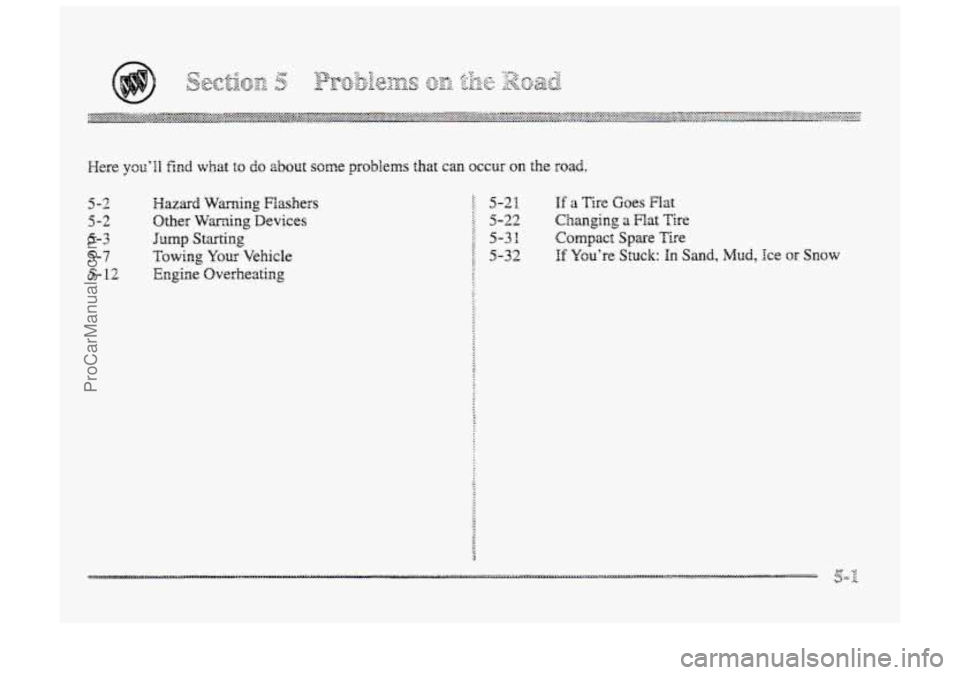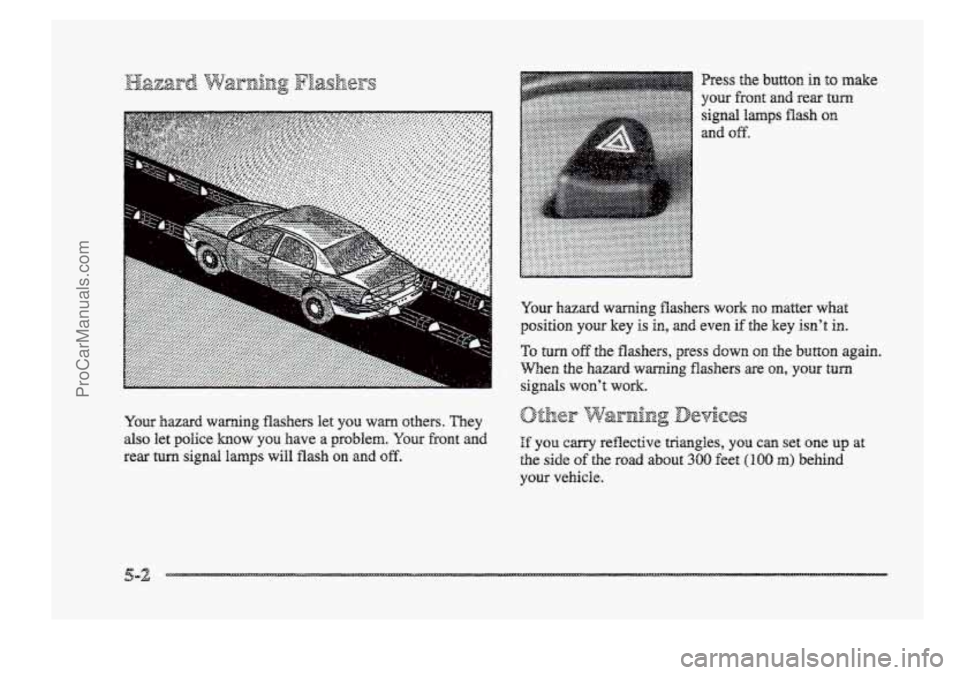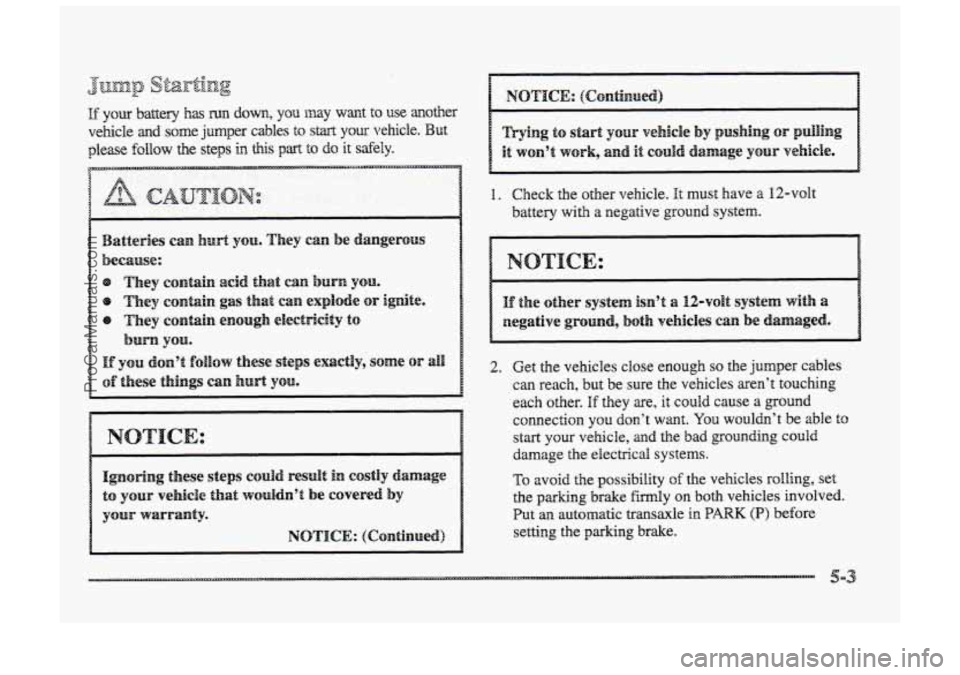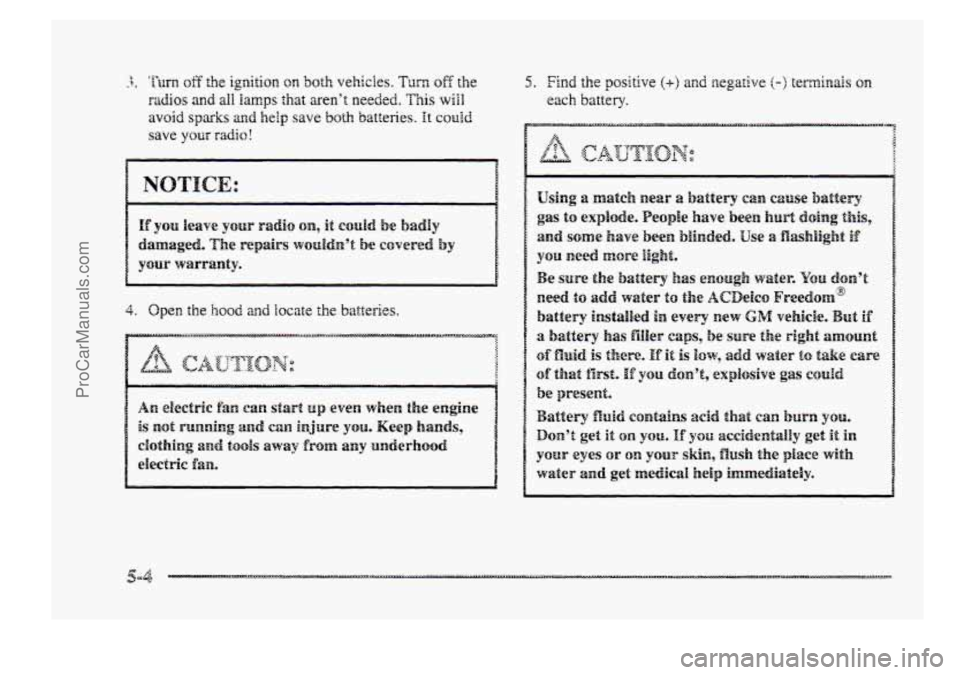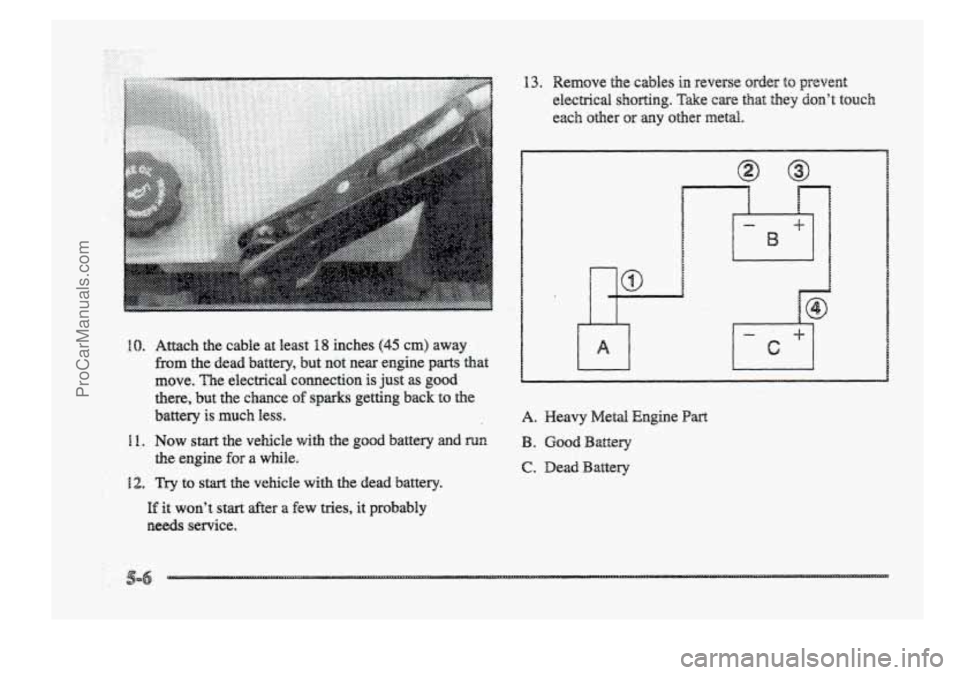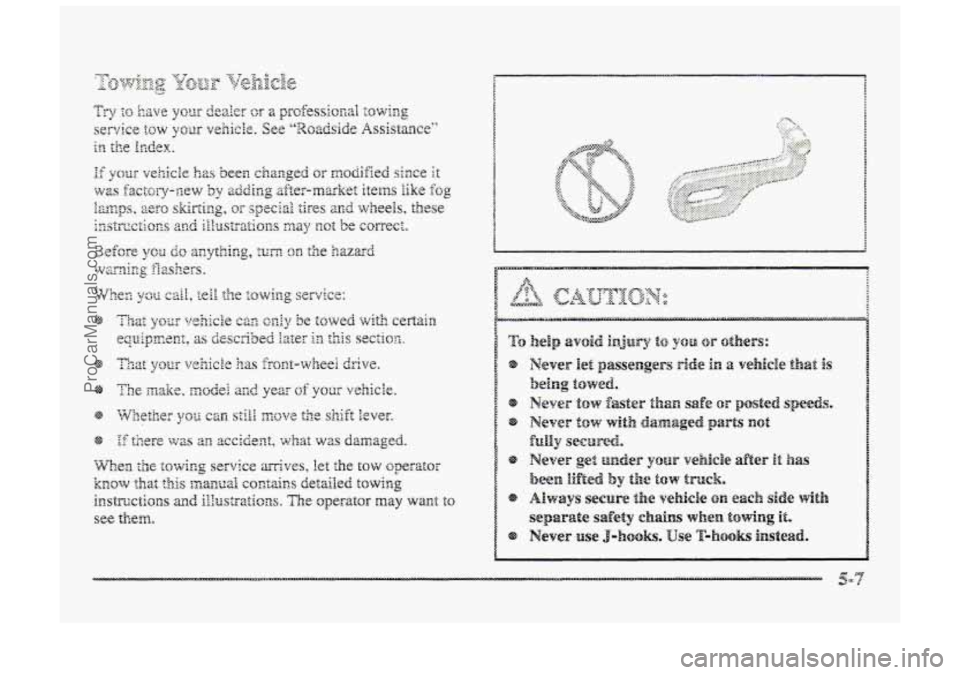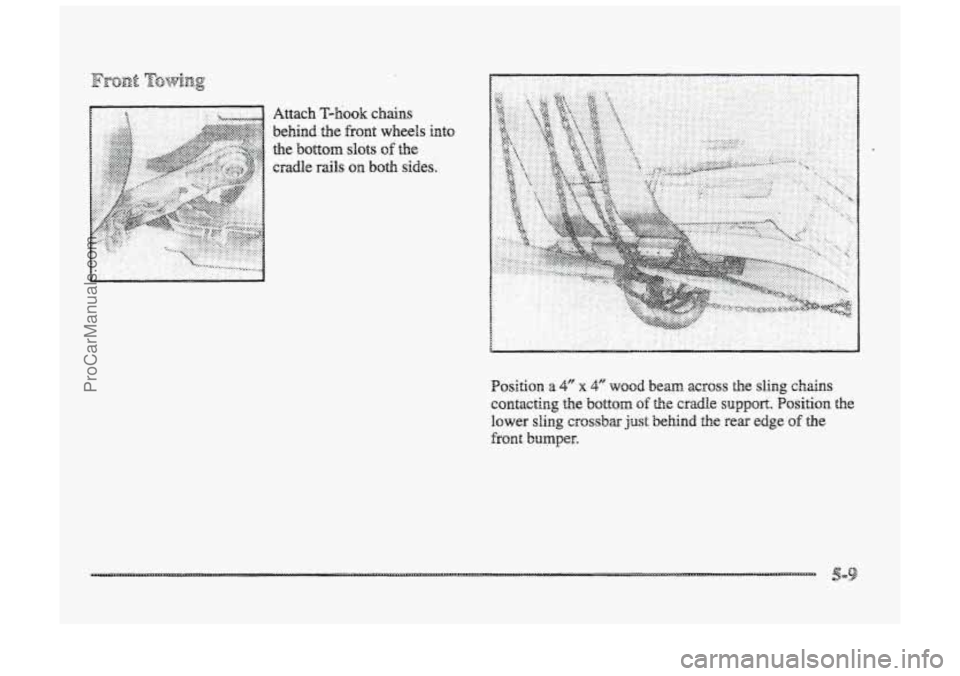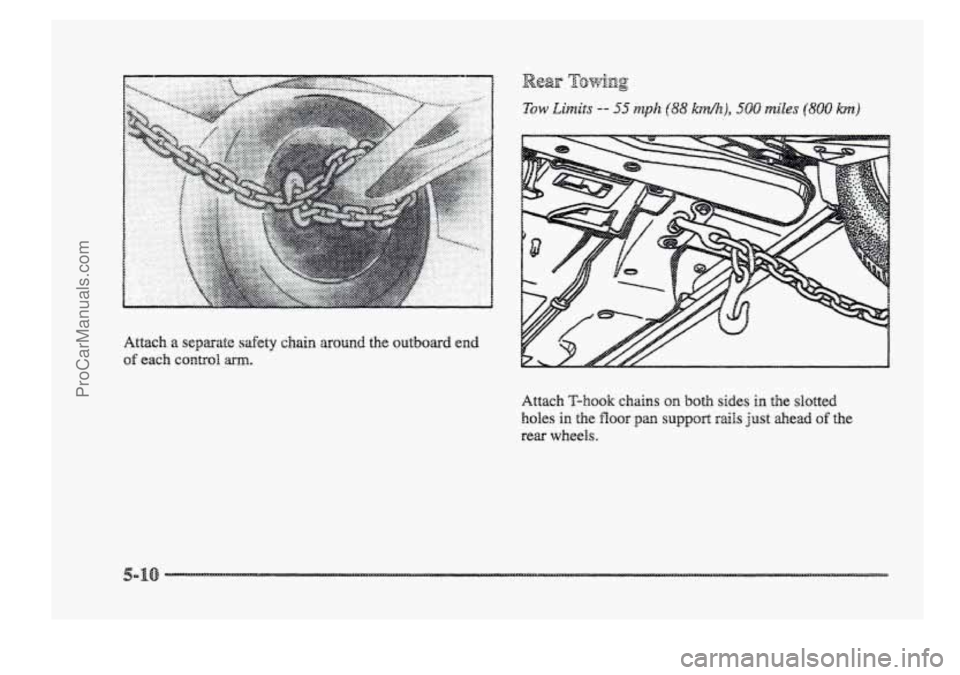BUICK PARK AVENUE 1998 Owners Manual
PARK AVENUE 1998
BUICK
BUICK
https://www.carmanualsonline.info/img/43/57690/w960_57690-0.png
BUICK PARK AVENUE 1998 Owners Manual
Trending: check engine, lights, spare wheel, roof, check engine light, horn, climate control
Page 241 of 426
Mere YOLI’HH find what to do about some problems that can occur the road.
5-2
5-2
5-3
5-7
5- 12
Hazard Warning Flashers
Other Warning Devices
Towing Your Vehicle
Engine Overheating
sump Starting
ProCarManuals.com
Page 242 of 426
h..,, - . '
YQW hazard warning flashers work no matter what
position yow key is in, and even if the key isn't in.
To turn off the flashers, press down on the button again.
When the hazard warning flashers are CUI, your turn
signals won't work.
your vehicle.
ProCarManuals.com
Page 243 of 426
1. Check the other vehicle. It must have a 12-volt
battery with a negative ground system.
2. Get the vehicles close enough so the jumper cables
can reach, but be sure the vehicles aren’t touching
each other.
If they are, it could cause a ground
connection YOU don’t want. YQU wouldn’t be able to
start your vehicle, and the bad grounding could
damage
the electrical systems.
TQ avoid the possibility of the vehicles rolling, set
the parking brake firmly on both vehicles involved.
Put
an automatic transaxle in PARK (PI before
setting the parking brake.
ProCarManuals.com
Page 244 of 426
3. ’hm off the ignition on 5~1th vehicles. Turn off the
radios and all lamps that aren’t needed. This will
avoid sparks and help save both batteries. Et could
save YSUP radio!
damaged. The repairs wouldn’t be covered by
your warranty.
4. Open the hood and locate the batteries.
ProCarManuals.com
Page 245 of 426
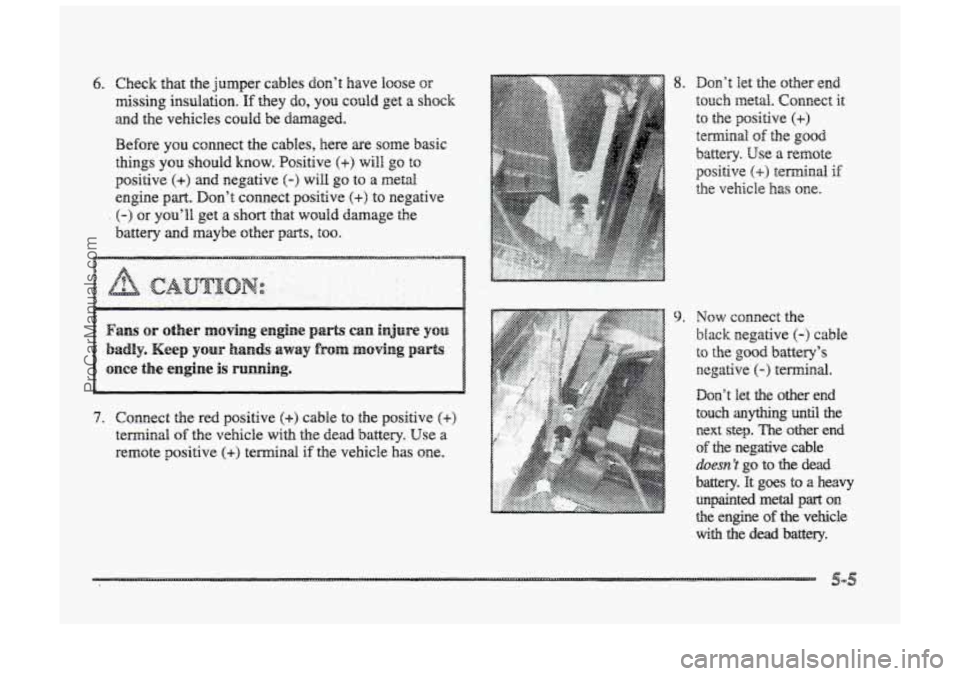
6. Check that the jumper cables don’t have loose or
missing insulation. If they do, you could get a shock
and the vehicles could be damaged.
Before
you connect the cables, here are SOW basic
things
you should know. Positive (9) will go to
positive (+) and negative (-) will go to a metal
engine
pa. Don’t connect positive (+) to negative
(-1 or you’ll get a short that would damage the
battery
and maybe other parts, too.
7. Connect the red positive (9) cable to the positive (+>
terminal of the vehicle with the dead battery. Use a
remote positive
(+) terminal if the vehicle has one.
8. Don’t let the other end
t~~h metal. Connect it
to the positive (+)
terminal of the good
battery. Use a remote
positive
(9) terminal if
the vehicle has one.
NOW connect the
black negative (-) cable
to the good battery’s
negative (-) terminal.
Don’t let the other end
touch anytkzng
until the
next
step. The other end
of the negative cable
doem Z go to the dead
battery.
It goes to a heavy
unpainted metal
part on
the engine of the vebcle
with the dead battery.
ProCarManuals.com
Page 246 of 426
................... ............ .................... ....... ......... ... ........ .. ... ..... ........... .........
IO. Attach the cable at least 18 inches (45 cm) away
from the dead battery, but not near engine parts that
move. The electrical connection is just as good
thee, but the chance of sparks getting back to the
battery is much less.
11. Now star& the vehicle with the good battery and run
the engine for a while.
.. !: :. 1%. Try to start the vehicle with the dead battery.
_. . If it won’t start &er a few tries, it probably
A. Heavy Metal Engine Part
B. Good Battery
C. Dead Battery
.:,:’ . +
.. needs service. .. ,.. .I ..
ProCarManuals.com
Page 247 of 426
Page 248 of 426
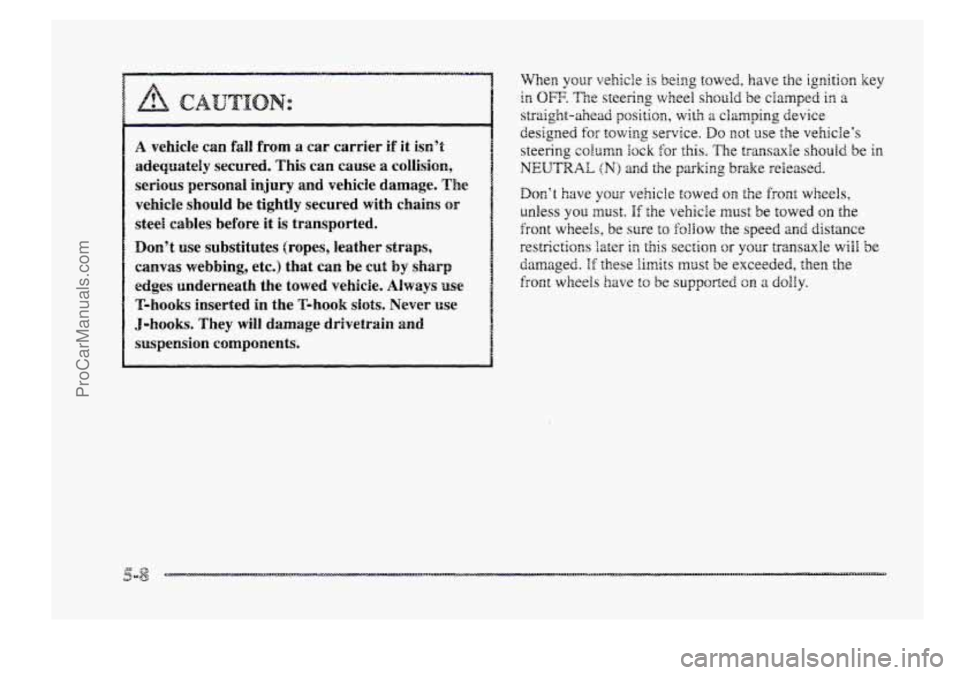
2
A vehicle can fall from a car carrier if it isn’t
adequately secured. This can cause a collision,
serious personal injury and vehicle damage. The
vehicle should be tightly secured with chains OF
steel cables before it is transported.
Don’t use substitutes (ropes, leather straps,
canvas webbing, etc.) that can be cut by sharp
edges underneath the towed vehicje. Always use
T-hooks inserted in the T-hook siob. Never use
J-hooks. They will damage drivetrain and
suspension components. When your vehicle
is being towed, have the ignition key
in OW. The steering wheel should be
clamped in a.
straight-ahead position, with a clamping device
designed for towing service. DQ not use the vehicle’s
steering
column iock for this. The transaxle should be in
NEUTRAL (N) and the parking brake released.
Don’t have your vehicle towed the front wheels,
unless you must. If the vehicle must be towed QII the
front wheels, be sure to fallow the speed and distance
restrictions later in this section or your transaxle will be
damaged. If these Limits must be exceeded, then the
front wheels have to be supported on a dolly.
ProCarManuals.com
Page 249 of 426
Page 250 of 426
............ ... \, ............ ........
A
h:; 8.
ProCarManuals.com
Trending: low oil pressure, compression ratio, glove box, coolant level, wheelbase, ABS, battery replacement
